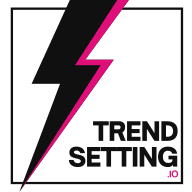What's a Unique Method for Forecasting Consumer Behavior?
We asked marketing professionals for their top methods for forecasting consumer behavior and how it shaped their marketing strategy. From identifying downstream economic indicators to analyzing search-trend data, here are five insights from marketing experts.
- Identify Downstream Economic Indicators
- Utilize Scenario Planning
- Employ Predictive Analytics
- Present Year-End Trend Reports
- Analyze Search-Trend Data
Identify Downstream Economic Indicators
One of our keys to consumer behavior forecasting is identifying economic indicators that we're "downstream" of. In the moving industry, that means real estate prices, mortgage rates, and jobs. People tend to move where the jobs are, where the homes are cheap, and when interest rates are low. Keeping track of these factors helps us to predict general seasonal trends in demand, as well as markets that are likely to see increased demand. It's helped us identify new markets to grow into, and also allowed us to identify the need to evolve into new market niches like apartment moving and packing services when demand for traditional home moves is low.

Utilize Scenario Planning
We use scenario planning to explore various possible futures based on different market variables, such as economic changes, technological advancements, or cultural shifts. By creating detailed scenarios, we model how consumers might react under certain conditions and build strategies that can flex with these possibilities. This allows us to prepare for multiple outcomes rather than betting everything on a single forecast. It gives us agility and confidence when consumer behavior takes unexpected turns.
The scenario-planning approach allowed us to prepare our e-commerce clients for the unpredictability of supply chain disruptions during the pandemic. By having multiple strategies in place for potential market reactions, our clients were able to pivot quickly, shifting focus to local suppliers or diversifying their product lines as needed. This flexibility not only protected their revenue streams but actually increased market share while competitors scrambled to react. It was a clear win for staying one step ahead.

Employ Predictive Analytics
One method we've used for forecasting consumer behavior at Rail-Trip Strategies is predictive analytics based on historical data combined with market trends. By analyzing past customer interactions, purchase patterns, and engagement metrics, we can identify trends and predict how consumers are likely to behave in the future.
For example, we implemented this approach to forecast which types of digital marketing services our clients would likely need based on their past inquiries and industry changes. Using this data, we were able to create targeted campaigns ahead of demand shifts. One instance involved identifying a growing interest in CRM optimization among our clients, so we launched an educational campaign on CRM best practices just as the need was peaking.
The benefit of this method was that it allowed us to stay proactive rather than reactive, aligning our marketing efforts with consumer demand before competitors could catch up. This led to a 20% increase in qualified leads because we were offering the right services at the right time, addressing client needs as they emerged. Predictive analytics gave us a clear advantage in tailoring our strategy to anticipate shifts in consumer behavior and adapt quickly.
Present Year-End Trend Reports
One of the reasons why clients choose to work with a marketing agency is that they are looking for a team to stay on top of the latest trends. Especially in the world of social media marketing, there are new trends every second, so giving clients the most accurate and up-to-date information on these trends on a regular basis is vital.
At the end of each year, we'll present a year-to-date analytic report to our clients to show them how their channels have grown in a 12-month period, but we don't stop there. We'll also do extensive trend research (both broadly and in their specific industries) and include several slides in the report updating them on what trends are going to be most prevalent in the upcoming year.
These trend reports encompass both specific content trends, as well as trends we're seeing overall in the digital space (i.e., seeing more success with longer-form content than short-form content from 2023 to 2024). We find that presenting these trend-forecasting reports in a year-end report allows us to start the new year strong with clear strategy recommendations and actions in place.

Analyze Search-Trend Data
We've found that analyzing search-trend data has been an invaluable method for forecasting consumer behavior. We regularly use tools like Google Trends to track the popularity of certain keywords related to our product and the health and wellness industry. This research allows us to identify emerging trends and changes in consumer interests before they become mainstream. Our data-driven approach has resulted in sales boosts and positioned us as a forward-thinking brand in the health and wellness space.



